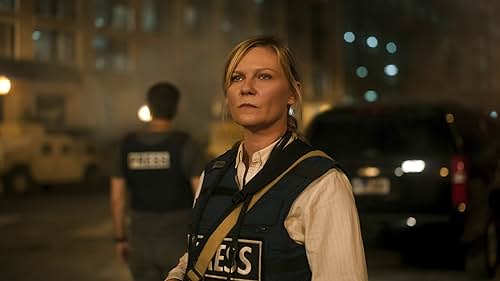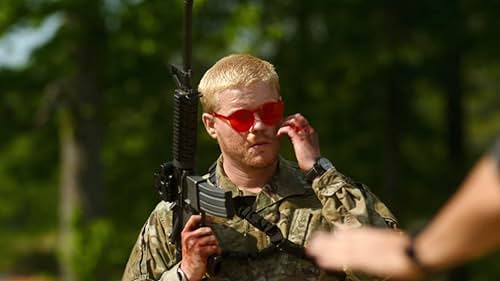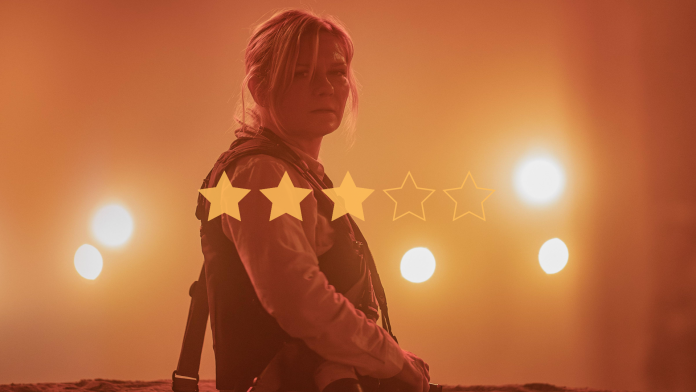★★★☆☆
One is hard pressed to believe that many in the audience for an ostensibly anti-war film would require persuading of war’s evils. If anything, they may be seeking a fleeting grasp of the opposite impression; behind the many layers of safe remove provided by the cinema screen, and by way of seductively immersive filmmaking tactics, viewers can experience by proxy the adrenaline rush of peril, at no personal risk.
For all the assumed moral rigour of both making and attending war movies, the takeaway is so often an aesthetic one, if only in our temptation to applaud the filmmakers’ virtuosity. How, and with what amount of difficulty and research, did they make it all look and feel so very real?
The temptation to read films as allegories for filmmaking itself is often a wearisome one, if only for what feels like the inherent assumption that instead of serving any wider purpose, a film may only self-reflexively chomp on its own tail. Still, for all the scepticism you may carry for the notion that filmmakers would rather gaze at their own navel than anywhere beyond it, Alex Garland’s latest dystopian vision feels both encouraging of and genuinely enriched by this particular interpretation. In adopting the lenses of a band of wartime journalists headed towards the frontline of conflict, Garland questions the desensitising, aestheticising power of up-close, violent images, and appears to implicate both his characters and himself in the process.
When taken entirely as a feat of image-making, Civil War is undeniably striking. Some of Garland’s images have a faint whiff of the obvious (witness as sniper fire desecrates a theme park Santa, all to the soft twinkle of Christmas music!). Others lean towards the lyrical (a night-time forest fire casts our protagonists in a consoling glow), while even more are startling in their unvarnished ugliness (a poorly dug mass grave in broad daylight). Whichever way, all feel crafted with care; not unlike the care aspiring photojournalist Jessie (Cailee Spaeny) lavishes on her film camera, capturing bloody scenes of soldiers expiring on the ground in lushly grainy black and white. “It’s a great photo”, concedes the older, more experienced photographer mentoring her (Kirsten Dunst)—but it only feels halfway a compliment. After all, these scenes now encased in amber were all too real mere hours ago. Now they look fit for an art book.
Vivid imagery may pull us further away from what we’re seeing just as much as it draws us closer. This notion proves foundational both to Garland’s movie and its diagnosis of the personalities drawn to document conflict. Dunst’s jaded journo in particular has the hollowed out, near spectral look of someone who hasn’t seen a good night’s sleep in a long time. The need to quiet the endless loop of horrors in her head leads to an addictive craving for even more of them; Garland ensures that while what spectacle Civil War has to offer is unpleasant, loud and jarring, for his characters, silence may be even worse.

In its grappling with the effect of photography on our individual and collective understanding of violence, Civil War is compelling. Its single-minded narrative drive is arguably less the cowardly apolitical evasion many have denounced than an effective embodiment of its protagonists’ shellshock. With each exposure, the meaning of the images is diminished both for those taking them and the abstracted audience meant to see them. Still, the effect is complicated somewhat by the allusions to the real-world American political climate Garland does incorporate. In the film’s most memorable and, perhaps, most manipulative sequence, Jesse Plemons appears as a militant redneck who asks the all too pointed question “Where are you from?” from behind the barrel of a rifle. The scene’s queasy tension is undeniable, but much of it stems from evoking the spectre of alt-right ghouls Garland otherwise seems reluctant to depict. Granted, the film’s little-seen third-term President demonstrates multiple unignorable Trumpisms, such as an open (in this case, murderous) antagonism of journalists and disbanding the FBI. But details such as these threaten to make the film’s deliberate vagueness seem less like a truthful reflection of journalistic neutrality and more like a case of having your cake and eating it too. The ideologies providing the source of division may be evoked for audience’s recognition and shock, but they may only be lightly grazed before being backgrounded once more.

Granted, compelling counter arguments can be raised almost immediately; how, after all, could the film properly make clear the political context of its titular conflict without sliding into didacticism? And perhaps the arrival of a recognisable threat serves to confront our impartial heroes with the impossibility of their position. How can you stay neutral when the threat comes after you personally? In the end, what Civil War inspires the most reflection and debate on is itself. What it does and doesn’t do, and whether it ought to have done so differently. To Garland, that may be a victory in itself.
The Verdict
Ultimately, Civil War is a prime demonstration of both the benefits and drawbacks of filmmaking that purports to look outwards but is really placing itself under the microscope. Thoughtful and underdeveloped, engrossing and evasive all at once.
Words by Thomas Messner
Civil War is in cinemas now
Support the Indiependent
We’re trying to raise £200 a month to help cover our operational costs. This includes our ‘Writer of the month’ awards, where we recognise the amazing work produced by our contributor team. If you’ve enjoyed reading our site, we’d really appreciate it if you could donate to The Indiependent. Whether you can give £1 or £10, you’d be making a huge difference to our small team.
